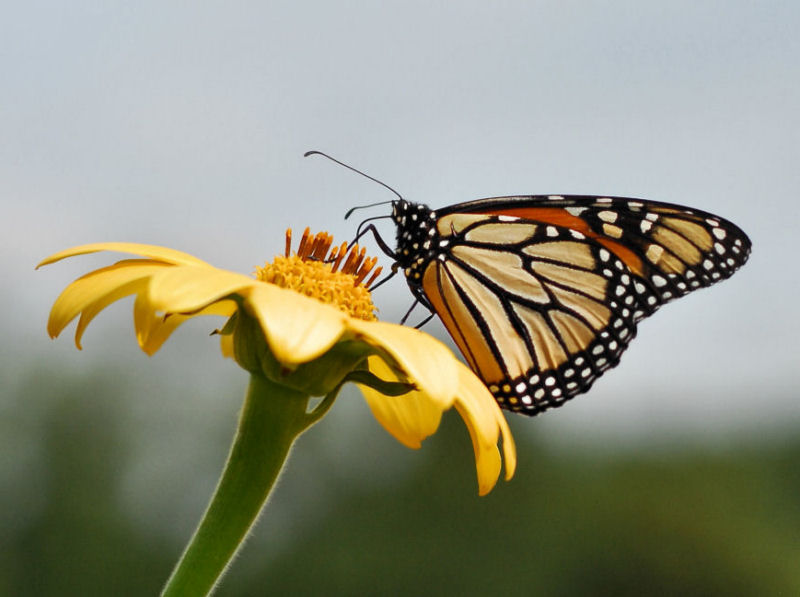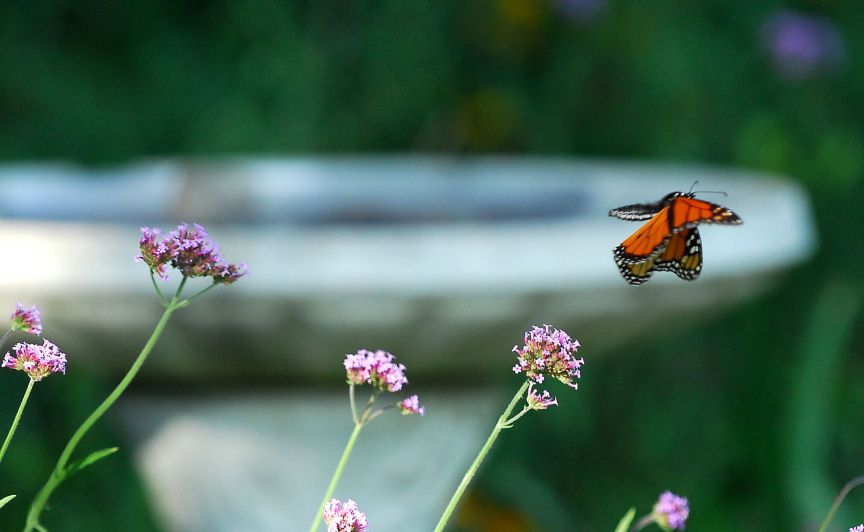Environment & Energy
Related: About this forumWorst Year Ever For Monarchs; Whole Population Occupies .67 Hectares In Mexico, Down 95% From 90s
OTTAWA — This is the worst year on record for the monarch butterfly, with North America’s entire population of the orange insects now squeezed into less than one hectare in Mexico.
The monarchs spend winter packed together in a remote forest of the Mexican mountains, and researchers have been measuring how much land they occupy each year since 1994. A bigger area means more monarchs.
Numbers jump up and down a lot, but not like this: The butterflies occupied between five and 20 hectares most of the time from 1994 to 2004. Since then, their colony has been shrinking. Last year, at 1.19 hectares, was considered a disaster. This winter’s cluster is just over half that size: 0.67 ha.
At the University of Ottawa, biologist and butterfly specialist Jeremy Kerr was stunned by the news. “That’s the worst!” he said as the figures were read out to him. “We’re talking about a twentieth” of the population from the 1990s, when measurements began, he said. “Or not even” a twentieth.
EDIT
http://www.ottawacitizen.com/technology/Butterfly+count+Mexico+reveals+bleak+winter+monarchs/9857849/story.html
Botany
(70,447 posts)And 6 were in a little prairie plot (wild area) in Athens County, OH one day last August.
Things you can do.
Plant native plants including milkweeds ..... install plants that also help to
feed butterflies and native pollinators from spring to fall examples willows,
penstemon (beardtongue) all the way up to new england asters
Use no insecticides or if you have to use an insecticidal soap
Eliminate as much lawn and non native invasive plants as you can.

pscot
(21,024 posts)progressoid
(49,947 posts)Of course, I rarely see milkweed anymore either. It used to be everywhere when we were kids.
postulater
(5,075 posts)Hardly see them anymore either.
northoftheborder
(7,569 posts)other plants to support the whole life cycle of the Monarch is needed.
bvar22
(39,909 posts)We've see ZERO Monarchs this year, coming or going.
We used to live in Minneapolis/St Paul, a migration Summer destination for Monarchs.
In 2004, I spent the Summer photographing these beautiful Butterflies.
Coincidentally, these are the same Monarchs that migrate through Arkansas twice a year.
Photographing them while they were sitting still was fairly easy.
Catching them in flight was another thing all together.
I have a young niece who calls them "Flutterbys",
a name that seems more appropriate to me.
We have missed seeing the Monarchs this year.
We have planted and maintain plenty Milkweed, but they didn't show.
I hope the migration route has shifted and they are OK,
but somehow, I doubt this.
Other more local varieties of Butterflies seem to be doing OK.
The Hummingbirds are here, but even their population seems diminished too.
Benton D Struckcheon
(2,347 posts)and there's plenty of milkweed growing wild along the roadsides here. Still, they became rare to see last year. Just two years ago I had lots of monarchs, and lots of honey bees. Last year no honey bees, and the monarchs were rare. Bumble bees seemed to still be around in their old numbers. Will have to see this year. I did spot a honey bee a couple of days ago.
This is not good.
Bill USA
(6,436 posts)Locals who try to protect the trees are risking being killed.
recommended.

